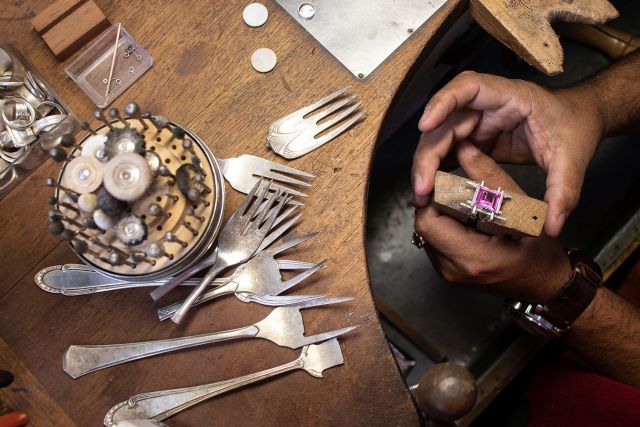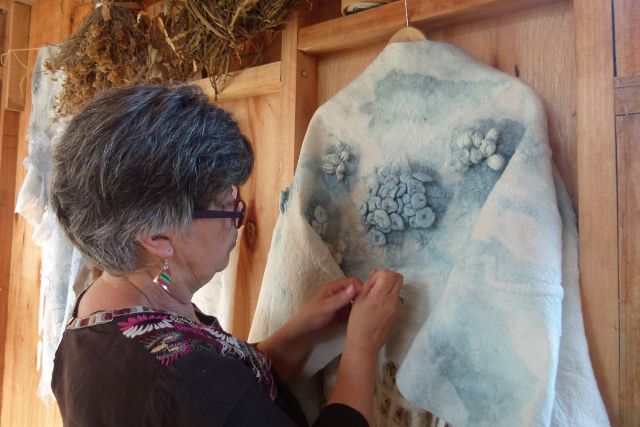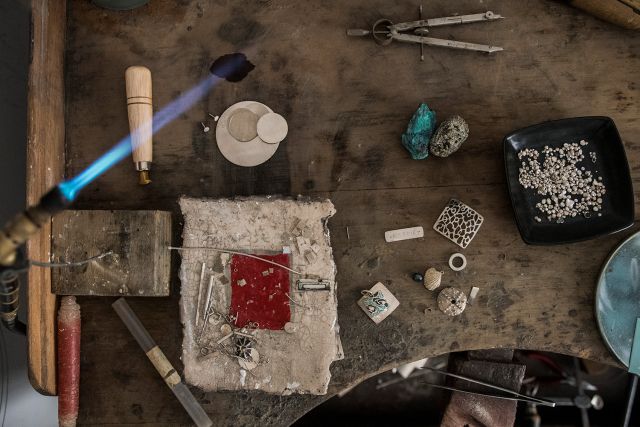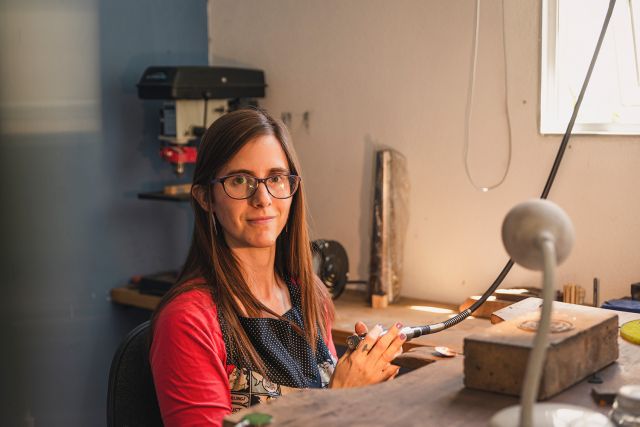This ring was made with three antique silver fork prongs which cross over each other in the shape of stamens of a flower. At each upper end there is a turquoise as if they were the anthers of the flower.
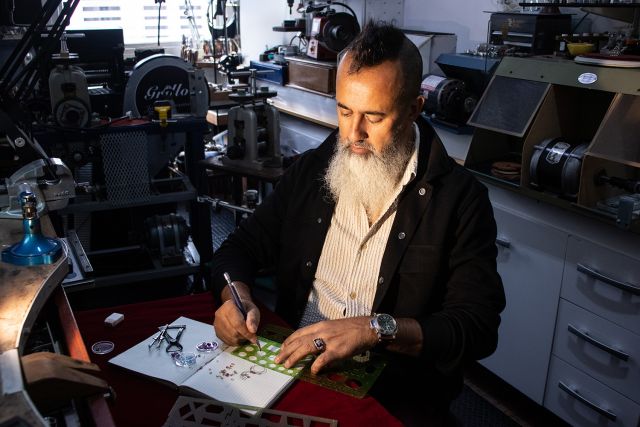
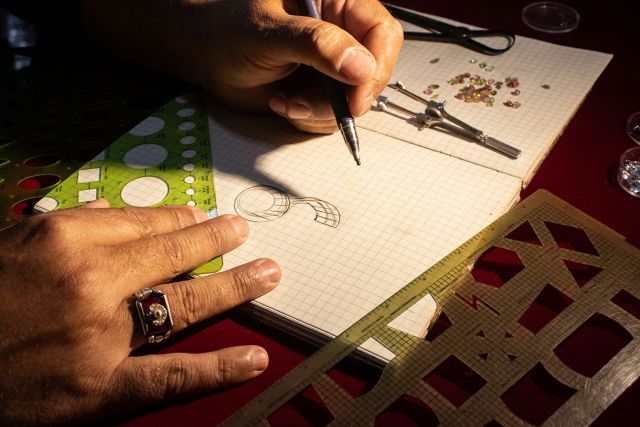
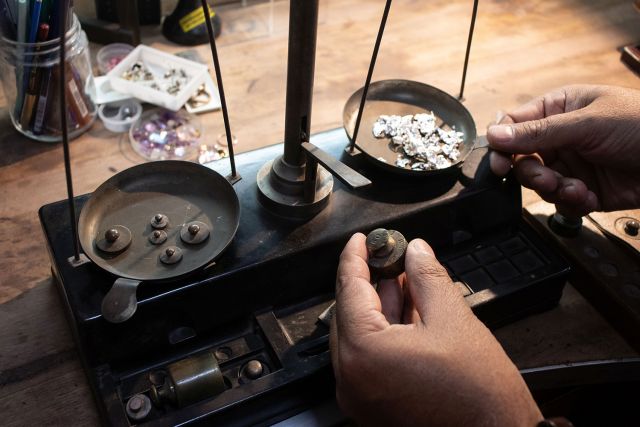
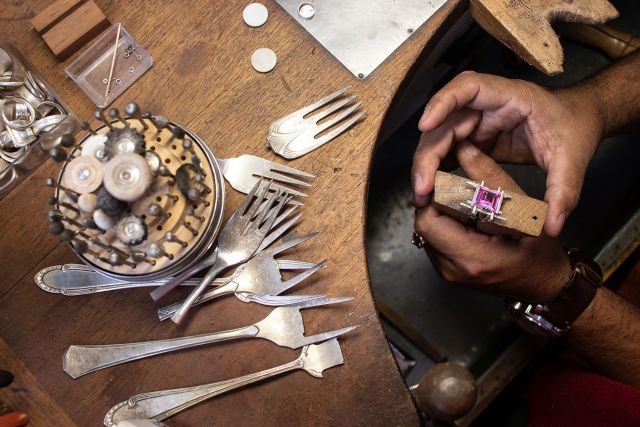
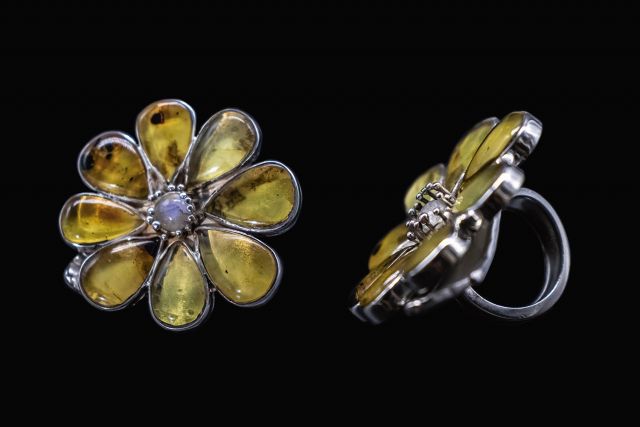
Pablo Grillo
- Silversmith
- Montevideo, Uruguay
- Master Artisan
Freedom to transform
- • Pablo works his jewellery pieces with creativity and skill
- • Sensitivity and imagination are embodied in his pieces
- • Nature and architecture influence his work
Since 2001 and for nine years Pablo Grillo was part of a theatre company that travelled to different parts of Asia, Europe and Latin America. He took advantage of these stays to study jewellery and learn the making process from workshops. This allowed him to discover Persian jewellery in Isfahan in Iran, goldsmithing and damascus techniques in Toledo in Spain and indigenous Mapuche jewellery in Chile. Today, Pablo incorporates all these learnings into the design and creation of his pieces. "I think the craft chose me, because from a very young age creativity and manual skills allowed me to assemble and disassemble toys, as well as explore the world and transform objects," says Pablo. "Today, the freedom I feel in expressing my art through goldsmithing keeps intact the restlessness of those first times I created objects with my hands."
Read the full interviewWorks
Photo: ©Agustina Sonino

Photo: ©Agustina Sonino
This ring was inspired by the mburucuyá flower, representative of the native flora of Uruguay. The body of the ring is designed with two silver coffee spoon handles. The eight petals of the flower are made with moonstone set in 950 silver and the stamens are in silver wire. The flower's anthers have turquoise on the eight ends.

Photo: ©Agustina Sonino
This ring was made with an antique silver spoon used to handle and serve shrimp (shellfish). At one end there is a 950 silver sphere forming a seed. At the other end there is a leaf formed by a moonstone set in 950 silver.

Photo: ©Agustina Sonino
This ring was made in the shape of a flower with four petals. Abalone set in 950 silver was used for the petals. Pablo Grillo used a circular green jade stone for the centre, forming the ovule of the flower.

Photo: ©Agustina Sonino
The ring in this case was made with a coffee spoon, using the concave part to form a leaf, making cuts at the ends to show the skeleton of the leaf. Likewise, an oxide patina was used. A jade stone was also set in one of the tips of the leaf, oriented towards the centre like the stigma of the flower. 950 silver was used to make the filaments that appear on the sides.





